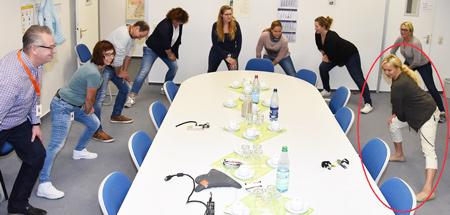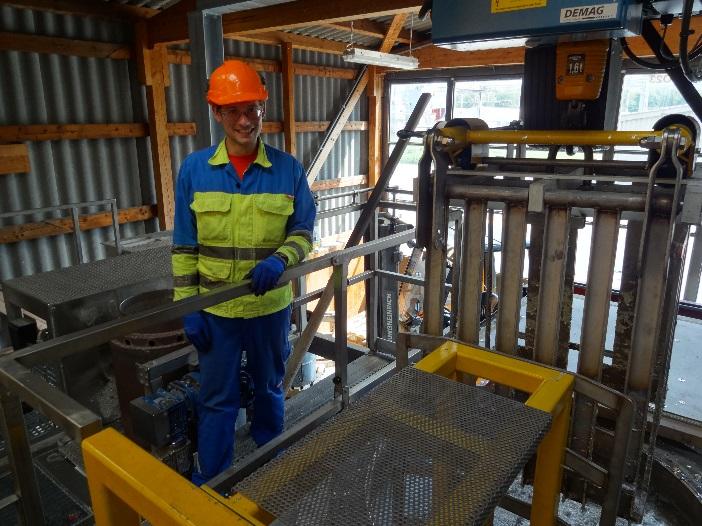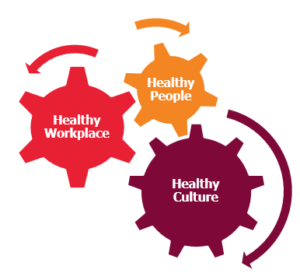 Company Background
Company Background
The Dow Chemical Company is a global Company with a diversified portfolio of specialty chemical, advanced materials, agro sciences and plastics businesses operating 300 sites in about 50 countries and with approximately 54,000 employees.
At Dow, protecting people and the environment is part of everything we do and every decision we make. A commitment to safety, employee health and world-leading environmental performance is engrained in our Company and culture.
Health is a strategic priority for Dow and is essential for our Sustainability. This means paying attention to the health aspects of all our activities:
- Employee health and productivity
- Public health
- The health impact of our products
- Development of products that offer health benefits/solutions
The objective of Dow Health related functions (Health Services, Industrial Hygiene, Personal Safety and Human Resources) is to develop and execute programs to protect and optimize the health and performance of the workforce, to contribute to the effective management of health risk related to products and operations and to provide health-related consulting in support of business success.
Activity
For many years, Dow managed occupational safety & health promotion programs relatively independent from one another. During the development of the new Company 2025 Sustainability goals (2015-2025), Dow introduced Total Worker Health (TWH) (registered name of the National Institute of Occupational Safety and Health) as a new health strategy. This has resulted in the inclusion of a stand-alone Health Goal within the set of sustainability goals, which had not been the case in the previous two 10 year goal cycles.
Dow is putting in place a long-term strategy for achieving our TWH goal, with short-term and longer term objectives as well as clear metrics to measure impact and progress. Leading indicators (voluntary participation in Health Exams and Workplace Risk Reduction) help to predict the goals and targets’ evolution. Health protection along with health promotion and engagement efforts aren’t new to Dow, but with the strategic alignment provided by the 2025 Sustainability Goals, there is a stronger ownership and accountability for the goal starting with top leadership with alignment across all parts of the organization (less functionally driven).
The TWH strategy is designed to reduce and eliminate workplace health risks that arise from exposures to chemical, physical, biological and ergonomic hazards, protect workers from workplace health risks where they still occur and improve the health of our people by influencing their health behaviors at work and at home. This is all done in an integrated manner.
TWH has 3 strategic elements: Healthy Culture, Healthy Workplace and Healthy People.
Healthy Culture represents the underlying values driving healthy behaviors and forms the foundation of TWH underpinning our efforts to promote and maintain both a Healthy Workplace and Healthy People.
Our approach to measuring Healthy Culture is based on a combination of the CDC Worksite Health Scorecard (Organizational support, tobacco control, nutrition, lactation support, physical activity, stress management, etc.) and other evidence based best practices..
Healthy Workplace refers to continuous efforts to identify workplace health risks, prioritize and reduce them utilizing the hierarchy of control (preferring engineering controls over the use of personal protective equipment).
Occupational Health and Preventive Health Programs both contribute to the Healthy People component of our strategy. To measure the impact of preventive health programs, we have retooled the Health Assessment Program exams so that they align with the My Life Check approach for evaluating “Life’s Simple 7” risk factors as defined by the American Heart Association (AHA). The impact of Occupational Health Programs and workplace health risk reduction is measured as a reduction of the number of occupational injuries and illnesses from workplace health stressors.
Growing evidence indicates that comprehensive policies and programs that simultaneously address health protection and health promotion may be more effective in preventing disease and promoting health and safety than either approach taken separately.
Examples of the integrated approach:
- Smoking cessation programs included in the education of respirator wearers
- Resiliency training included in leader’s training curricula
- Risks of prolonged sitting training with sit/stand workstations and walking workstations targeting office workers while managing the personal safety risks of these stations
- Fitness for duty procedure crossing all functions involved (Health Services, Industrial Hygiene, Human Resources, EH&S and Hiring function)
- Physical activity programs targeted to people exposed to ergonomic risk to minimize injuries and illnesses and increase their fitness for duty
Tools and Outcomes
The Healthy Culture Index (HCI) measures (through a set of questions) the Site’s alignment with evidence based best practice strategies and interventions in diverse health related areas:
- Organizational Support – includes job/people match, flexible work options, leadership commitment, off-the-job safety & health and healthy work schedules
- Access to Healthy Options – includes Access to Healthy Food, Access to Physical Activity, weight management, tobacco control, shift work and substance free workplace prevention.
- Workplace Exposure Assessment – assesses the effectiveness of the site’s exposure assessment work process, including exposure assessment updates, monitoring plan completion and follow up actions.
- Industrial Hygiene Work Practices – includes observations and feedback on employees’ use of controls to protect against noise, chemical, ergonomic risks, etc.
- Employee Health Culture – includes Global employee survey health & safety culture responses and Health Assessment participation
Each question has an assigned score depending on the impact on employee health (similar to CDC worksite scorecard). At the end of each year, Dow sites evaluate themselves achieving a Site score. Depending on the score, sites can be awarded as Bronze, Silver, Gold or Platinum Sites.

Self-organized site activities having a significant impact on the ongoing healthy lifestyle of coworkers.
The HCI 2025 goal is to have 80% of the Dow population working at Gold or Platinum Sites, with annual targets established to measure progress toward the goal. In the first year of implementation, HCI showed an improvement of 4X the annual target with a participation of 93% of Dow Sites across the world.
The Healthy Workplace Index measures the company’s progress at eliminating high priority workplace health risks.
The company has set some aggressive targets for eliminating high priority health risks under the 10 year goal. In the first year, the achievement was in excess of 3X the reduction target. Much effort has been focused toward technology solutions to reduce potential workplace exposures to chemical, ergonomic and noise risks and then leveraging these solutions to other facilities with similar operations. These workplace improvements have had a positive impact on reducing potential health risks to employees and have led to increased job satisfaction and productivity as the need to rely on personal protective equipment is eliminated and physical strain of the work is reduced.

By replacing the manual handling of 25 kg tin ingots (a total of 6,000kg of tin each shift) with a crane, the work I do has become less strain full and more enjoyable. As the job of tin melting requires less of my time and attention due to automatization, I can now focus on other elements of my job more thoroughly which improves the quality of my work and reduces work stress
The Healthy People component of the goal is evaluated through two metrics:
For the occupational health metric, the number of health related injuries and illnesses are extracted from the company occupational injury and illness reporting database. These refer to injuries and illnesses arising from potential workplace exposure to chemical, physical, biological or ergonomic stressors. In 2016, we saw a reduction of 24% compared to the 2015 baseline and exceeded the 2016 reduction target by 11%.
For the Preventive health metric, we need more time to observe a measurable impact. We expect to see improvement in health risk indicators (Current smoking, BMI, Healthy diet pattern, total Cholesterol, Blood pressure, Physical activity and Fasting plasma glucose) in a couple of years.
The strategy is to concentrate efforts around two or three risks at the same time with programs lasting 2 or 3 years. Example of that is Dow’s US implementation of the National Diabetes Prevention Program (DPP):
Omada® is a breakthrough online program based on the Diabetes Prevention Program clinical trial, which showed that people with multiple risk factors can delay or avoid developing type 2 diabetes by losing weight through diet and exercise. Almost 4,000 Dow People throughout the U.S. have participated in Omada® and the results are exciting! Over 50% of the participants have lost at least 5% of their initial body weight and are keeping it off! Here’s what a recent Dow participant said about the program:
“You have to try it!!! I have learned so much from the weekly lessons and the coach was the most inspirational person ever. She took the time to check in and always answered any questions I had. I love the program and would highly recommend it because of the support.”
–Dow Program Participant
With TWH, the Company expects to have a healthier, happier and more productive workforce.
